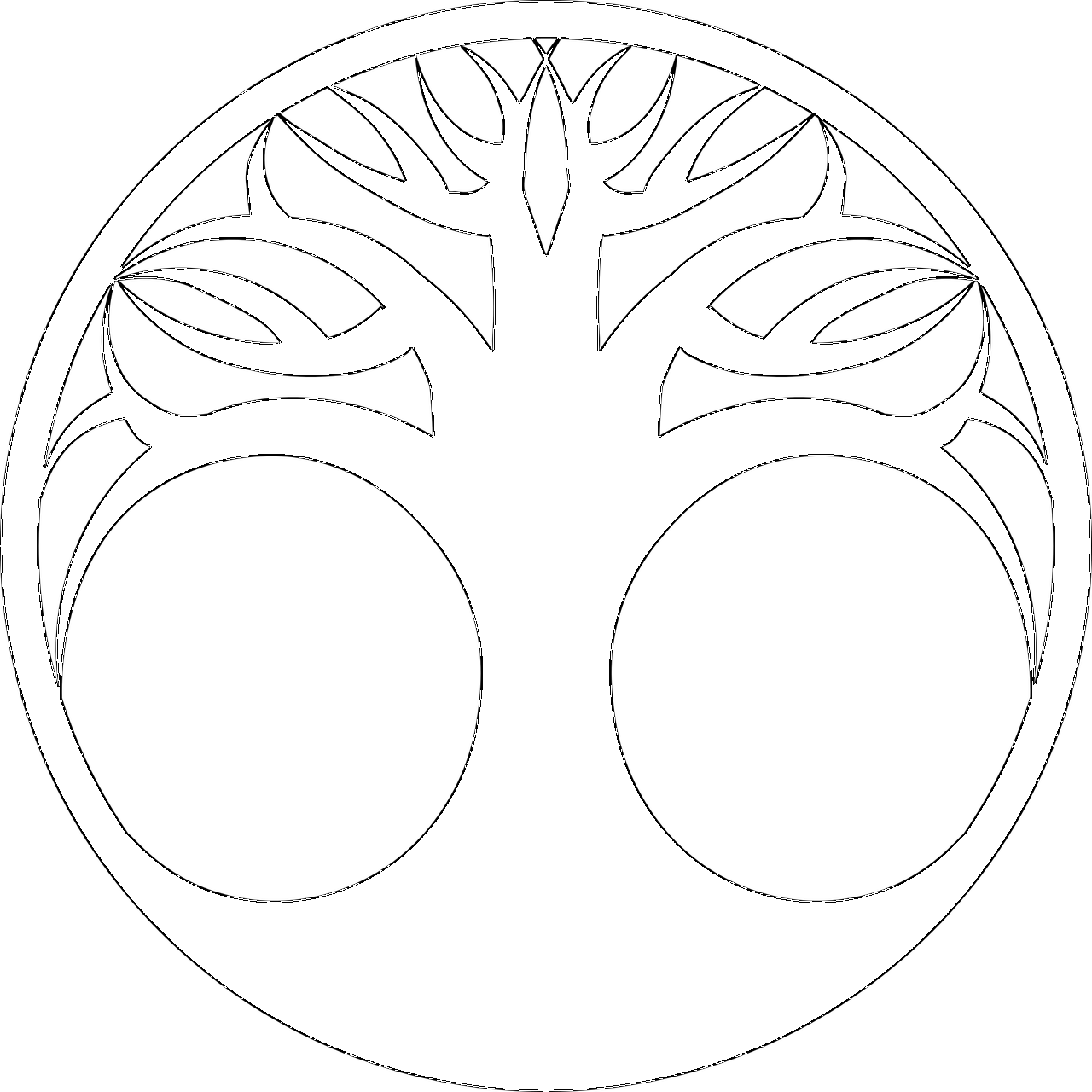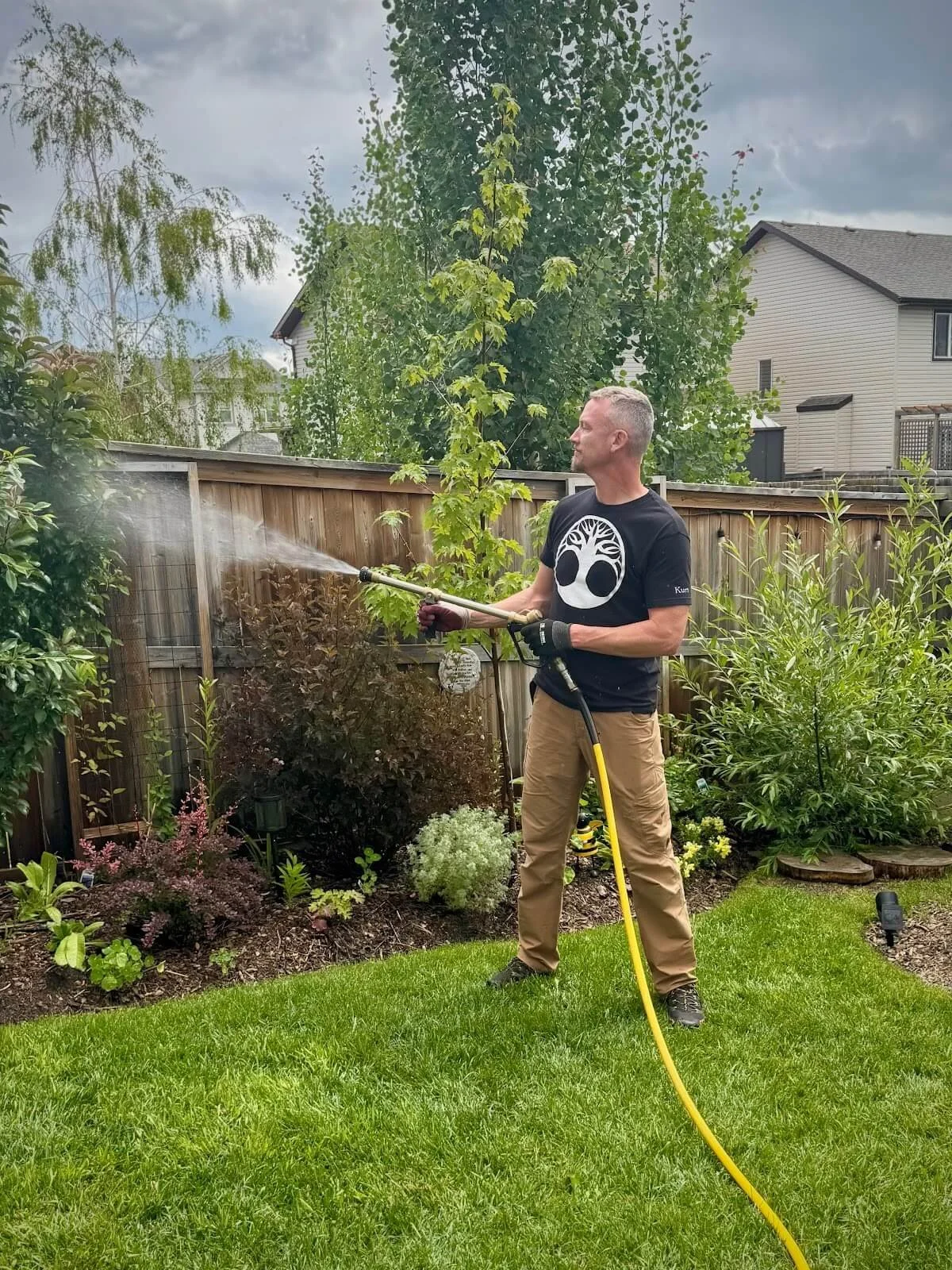Is My Aspen or Poplar Dying?
Recognizing Hypoxylon Canker in:
Trembling Aspen, Balsam Poplar & Columnar Aspen in Cochrane
Have you noticed your aspen or poplar tree looking sick lately? Bark falling off in chunks? Orange staining on the trunk? Dead branches popping up out of nowhere?
You might be looking at a serious fungal disease called Hypoxylon canker — one of the most common causes of decline and death in Trembling Aspen, Balsam Poplar, and Columnar Aspen in Cochrane and NW Calgary.
It’s a slow-moving killer that often goes unnoticed until it’s too late — but if you catch it early, there’s still time to help.
What is Hypoxylon Canker?
Hypoxylon is a fungus that infects trees internally, damaging the sapwood and eventually cutting off the tree’s ability to transport water and nutrients. Once the fungus gets in, it grows beneath the bark and causes visible symptoms on the outside of the tree.
Unlike pests that chew or bore, this disease acts more like rot from within.
How to Spot Hypoxylon in Poplars and Aspens
Here are the key signs to watch for on local tree species:
Orange oozing or staining on the bark
One of the first noticeable symptoms is orange or rust-colored sap or staining. This can look like wet patches or drips on the bark.
It often appears near wounds or natural cracks and may seem like the tree is “bleeding.”
Insect damage and ooze from exit holes
Trees infected with Hypoxylon are often also attacked by poplar borers or other insects. You may see sawdust, small holes, or sap dripping from these wounds.
These insects don’t cause the disease but take advantage of weakened trees — making everything worse.
Bark falling off or peeling in strips
The bark begins to slough off, often exposing grayish or blackened areas underneath.
The wood beneath might look dry, cracked, or stained.
Dieback starting in the crown
Branches may begin to die from the top down.
In the heat of summer, you might notice entire sections of the tree drying out or failing to leaf out at all.
Why It’s Happening
Trees don’t just “get sick” out of nowhere. Hypoxylon only attacks stressed or weakened trees.
The real root of the issue usually lies underground — in the soil.
Most of the aspens and poplars we see with Hypoxylon canker have one or more of the following:
Compacted or disturbed soil from construction, mowing, or foot traffic
Poor microbiology, meaning not enough beneficial fungi and bacteria in the root zone
Root damage or girdling from poor planting techniques
Drought stress, especially during hot Alberta summers
Anaerobic conditions, where the soil stays too wet or lacks oxygen
As supported by research from scientists like Dr. Thomas Dykstra, insects and disease pathogens are nature’s clean-up crew — they don’t attack healthy trees. They zero in on trees that are already failing due to internal imbalances, nutrient deficiencies, or microbial gaps in the soil.
Why Chemicals Won’t Help — and Might Make Things Worse
It’s tempting to reach for a chemical spray or synthetic fertilizer when your tree looks sick — but these treatments won’t solve the problem. In fact, they can often make things worse.
Chemical fungicides only treat surface symptoms — they don’t stop internal infections like Hypoxylon or address the underlying stress. And once the bark is damaged, it’s too late for sprays to be effective.
Synthetic fertilizers, especially high-nitrogen ones, can push weak growth in already stressed trees. This “junk food” growth is more vulnerable to pests and diseases and can further upset the natural soil balance.
Worse, both fungicides and synthetics can damage the soil biology — the very system that your tree depends on to recover. They kill beneficial fungi, bacteria, and microbes, making the tree more dependent on outside inputs and less resilient overall.
What Can You Do Instead?
If you’re seeing signs of Hypoxylon canker or poplar decline, don’t wait — the earlier we intervene, the better.
At Cochrane Tree Care, we offer:
Tree Health Consultations – On-site visits with ISA-certified arborist Kurt Stenberg to diagnose the problem and offer real, soil-based solutions.
Bioactive Fertilizer & Inoculant Treatments – Our regenerative foliar spray and deep root treatments are packed with beneficial microbes and nutrients that rebuild soil health and support natural recovery. Organic and safe.
Targeted Pruning & Support – In early stages, pruning and proactive care can help slow disease spread and reduce entry points for insects.
A Regenerative Approach to Tree Health
We believe in working with nature, not against it.
Our regenerative approach builds long-term resilience by restoring balance to the soil — encouraging stronger roots, healthier foliage, and natural resistance to disease and insects. It’s not about fighting symptoms. It’s about rebuilding strength from the ground up.
Take the Next Step
If you’re worried about your tree health, we’re here to help.
Book a Tree Health Consultation – Spend 30–60 minutes with Kurt reviewing your trees, yard, and treatment options.
Explore Our Organic Tree Treatment Program – Four visits per year, starting at $399 for small properties, including foliar sprays and/or deep root injections.
Request a Quote or Upload Photos – Quick form to help us understand your concerns.
About Kurt & Cochrane Tree Care
Kurt Stenberg is a regenerative arborist, permaculture practitioner, and certified arboriculture instructor with Arboriculture Canada. He also hosts the Arborist Blueprint Podcast, helping arborists across the world shift toward tree health-first practices.
At Cochrane Tree Care, we specialize in tree consultations, organic treatments, and sustainable solutions for long-term tree vitality.


